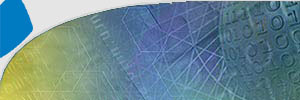Pixel
detector readout architectures
Hybrid pixel detectors are gaining importance within the
area of radiation imaging applications. In such devices, a pixel
detector material is bonded to readout electronic circuits. It is
possible to use both integrating and photon counting methods to read out
the information from the detector. However, only the photon counting
technique will enable energy discrimination.
Readout circuits for photon counting image sensors consist
of a complex mixture of analog and digital behavior. State of the art photon
counting pixel detector systems such as the Medipix 2 have previously been
presented. In this system, the analog channel consists of a pre-amplifier, a
pulse-shaping amplifier and comparators in addition to pulse pileup
rejecters and base-line restorers. The digital part consists of pulse
discrimination logic, counters and associated readout logic. Whereas the
integrating version contains a small number of transistors, photon counting
pixels contain complex circuitry. This means that the pixel design is driven
mainly by area, power consumption and mixed mode design constraints. The
area constraint is crucial because of the pixel size and hence the spatial
resolution is a fundamental imaging property.
One method of enabling color imaging, that is, resolving
multiple energy ranges, is to use the same methods as those used in image
sensors for light. This is a solution with low circuit complexity since it
discriminates only one energy range in each pixel. The color for each pixel
is then extrapolated from a predetermined pattern during post processing.
Another approach is to have multiple energy channels in all pixels. This
will give full resolution but it also involves high circuit complexity. In
this paper we present an architecture that utilizes the best of both these
techniques. The proposed architecture uses full spatial resolution for the
intensity and it uses sub-sampling for resolving the energy levels. The
results from standard image benchmarks show that the pixel architecture
produces images with almost the same quality as for those from a full
sampling architecture and with almost the same circuit complexity as is
necessary for a single energy range architecture.

Energy levels in a 3-level imaging system.

Sidan uppdaterades
09-jan-2007.

